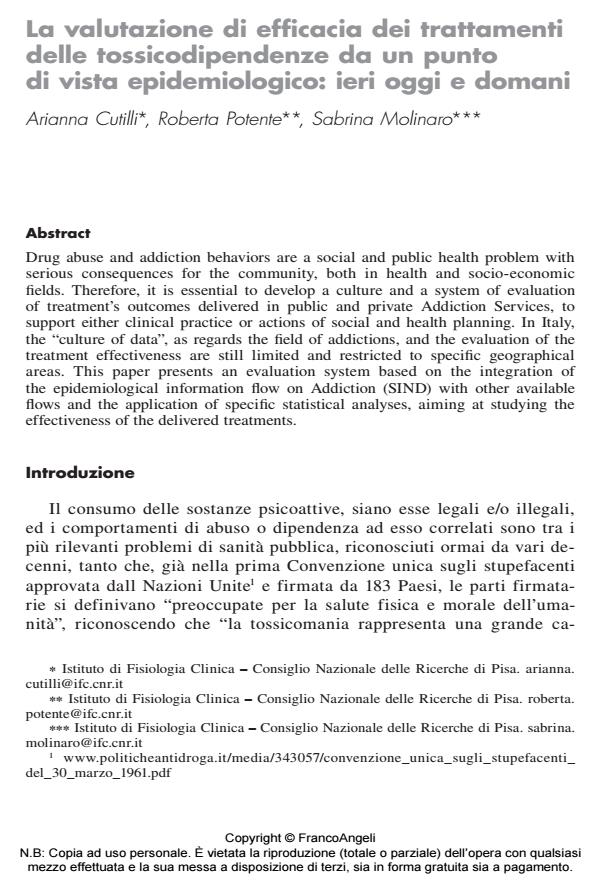La valutazione di efficacia dei trattamenti delle tossicodipendenze da un punto di vista epidemiologico: ieri oggi e domani
Journal title SICUREZZA E SCIENZE SOCIALI
Author/s Arianna Cutilli, Roberta Potente, Sabrina Molinaro
Publishing Year 2014 Issue 2014/3
Language Italian Pages 13 P. 63-75 File size 115 KB
DOI 10.3280/SISS2014-003005
DOI is like a bar code for intellectual property: to have more infomation
click here
Below, you can see the article first page
If you want to buy this article in PDF format, you can do it, following the instructions to buy download credits

FrancoAngeli is member of Publishers International Linking Association, Inc (PILA), a not-for-profit association which run the CrossRef service enabling links to and from online scholarly content.
Drug abuse and addiction behaviors are a social and public health problem with serious consequences for the community, both in health and socio-economic fields. Therefore, it is essential to develop a culture and a system of evaluation of treatment’s outcomes delivered in public and private Addiction Services, to support either clinical practice or actions of social and health planning. In Italy, the "culture of data", as regards the field of addictions, and the evaluation of the treatment effectiveness are still limited and restricted to specific geographical areas. This paper presents an evaluation system based on the integration of the epidemiological information flow on Addiction (SIND) with other available flows and the application of specific statistical analyses, aiming at studying the effectiveness of the delivered treatments.
Arianna Cutilli, Roberta Potente, Sabrina Molinaro, La valutazione di efficacia dei trattamenti delle tossicodipendenze da un punto di vista epidemiologico: ieri oggi e domani in "SICUREZZA E SCIENZE SOCIALI" 3/2014, pp 63-75, DOI: 10.3280/SISS2014-003005